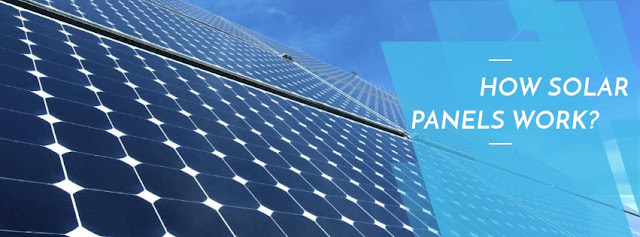Every solar panel
contains photovoltaic or PV cells. PV cells absorb light (photons) and convert
the light into electricity(voltage). When sunlight hits the solar panel, PV
cells converts sunlight directly to current (DC) electricity.
The
components of a PV cell
PV cell consist of two
layers of semiconductor material commonly composed of silicon crystals. Crystallized
silicon is not a very good conductor of electricity, but when impurities added,
a process called doping occurs resulting the generation of the electric
current.
The bottom layer of the
PV cell is usually doped with boron, which bonds with the silicon to facilitate
a positive charge (P), while the top layer is doped with phosphorus, which
bonds with the silicon to facilitate a negative charge (N).
The surface between the
resulting "p-type" and "n-type" semiconductors is called
the P-N junction. Electron movement at this surface produces an electric field that
allows electrons to flow only from the p-type layer to the n-type layer.
When sunlight enters
the cell, its energy knocks electrons loose in both layers. Because of the
opposite charges of the layers, the electrons want to flow from the n-type
layer to the p-type layer. But the electric field at the P-N junction prevents
this from happening.
The presence of an
external circuit, however, provides the necessary path for electrons in the
n-type layer to travel to the p-type layer. The electrons flowing through this
circuit, typically thin wires running along the top of the n-type layer provide
electricity.
Most PV systems are
based on individual square cells a few inches on a side. Alone, each cell
generates very little power (a few watts), so they are grouped together as
modules or panels. The panels are then either used as separate units or grouped
into larger arrays.
Types
of solar cells:
Monocrystalline
solar cells
These cells are made in
long cylinders and sliced into thin wafers. They also called as single
crystalline cells and are easily recognizable by their coloring. They are made
from very pure type of silicon. The purer the alignment of the molecules, the
more efficient the material is at converting sunlight into electricity. Monocrystalline solar cells are the most efficient compared to other cells. Beyond being most
efficient in their output of electrical power, monocrystalline solar cells are
also the most space-efficient. Another advantage of monocrystalline cells is
that they are the longest of all types.
Polycrystalline
cells
Polycrystalline solar cells, also known as polysilicon and multisilicon cells, were the first solar cells
ever introduced to the industry, in 1981. They are made by melting raw silicon and
poured into a square mold, hence the square shape of polycrystalline. This
process is faster and cheaper than that used for monocrystalline panels. While
production costs are lower, the efficiency of the cells is lower too.
Thin
film cells
Thin film solar cells
are distinguished
by the manner in which various type of semi-conducting materials are layered on
top of one another to create a series of thin films. They are less expensive
and is less affected by high temperatures. These types of solar cells are the
easiest to produce and economies of scale make them cheaper than the
alternatives due to less material being needed for its production. They can be
a good option where a lot of space is available.


Comments
Post a Comment